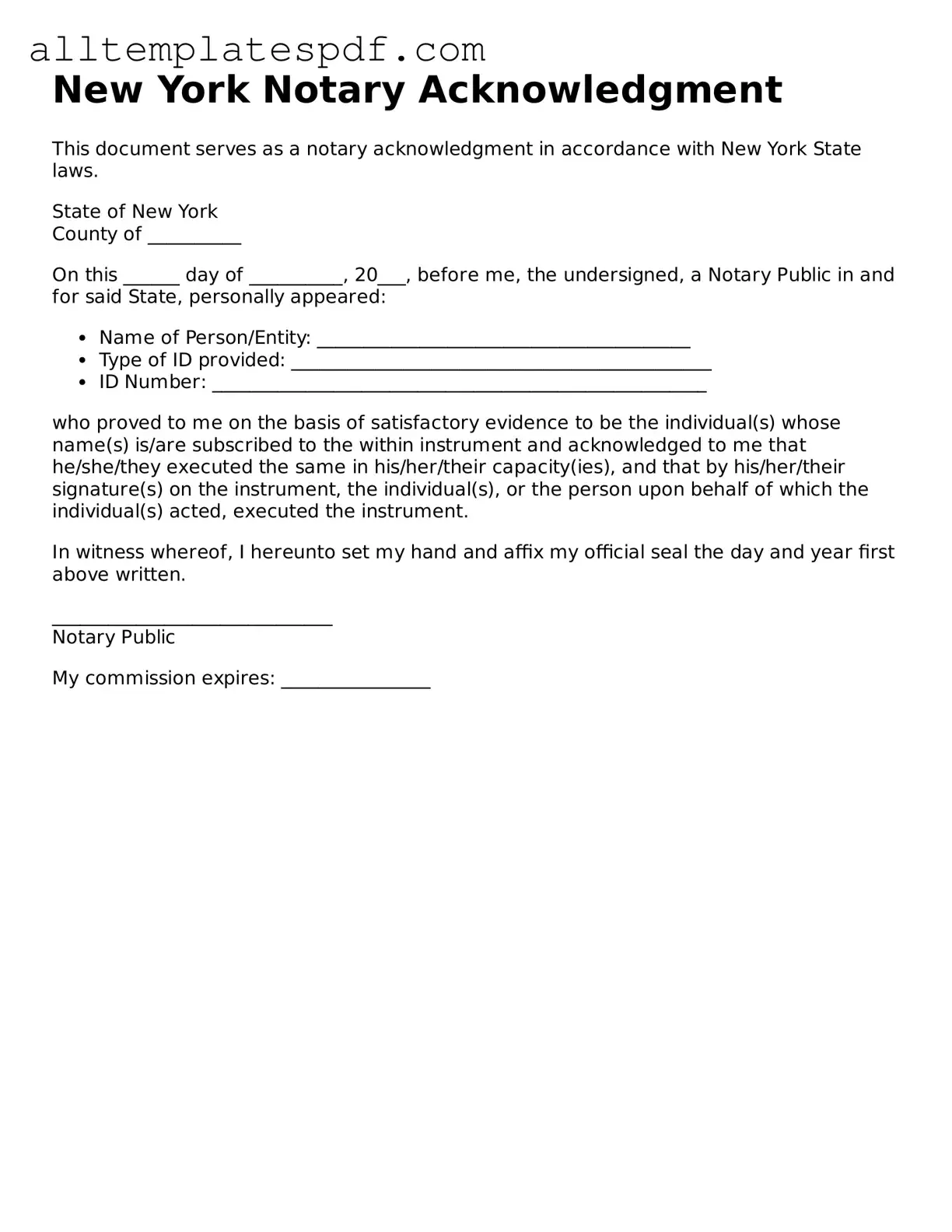Filling out the New York Notary Acknowledgement form can seem straightforward, yet many people make common mistakes that can lead to complications. Understanding these pitfalls can help ensure that the document is completed correctly and serves its intended purpose.
One frequent error occurs when individuals forget to include the date of the acknowledgment. This date is crucial, as it indicates when the notary performed the acknowledgment. Without it, the document may lack validity and could create confusion about the timing of the transaction.
Another mistake is failing to provide the signer’s name clearly. The name should match the one on the identification presented to the notary. If there is a discrepancy, it may raise questions about the authenticity of the signature and the identity of the signer.
People often neglect to check the format of the notary’s signature and seal. The notary must sign the form in the designated area and apply their official seal. If the seal is missing or improperly placed, it can render the acknowledgment ineffective.
Additionally, some individuals mistakenly think that the notary can fill out the form for them. While the notary can guide the signer, the responsibility for completing the form accurately rests with the individual. Relying too heavily on the notary can lead to incomplete or incorrect information.
Another common issue is the failure to include the correct county where the acknowledgment takes place. This detail is vital, as it identifies the jurisdiction in which the notary is authorized to act. Omitting this information can lead to legal challenges down the line.
People also sometimes forget to indicate whether the acknowledgment is for an individual or a corporation. This distinction is important, as it affects the legal implications of the document. Properly identifying the type of signer can prevent misunderstandings about the nature of the transaction.
Moreover, individuals may overlook the importance of ensuring that all signers are present during the acknowledgment. If multiple parties are involved, each must be present to have their signatures acknowledged. Failing to do so can invalidate the document.
Another mistake is not reviewing the entire form before submission. Taking a moment to double-check for errors can save time and prevent issues later. Small mistakes can lead to significant delays in processing the document.
Lastly, some individuals do not keep a copy of the completed acknowledgment for their records. Retaining a copy can be invaluable in case questions arise about the transaction in the future. Documentation is key in legal matters, and having a record can provide peace of mind.
By being aware of these common mistakes, individuals can navigate the process of completing the New York Notary Acknowledgement form more effectively. Careful attention to detail will help ensure that the acknowledgment is valid and serves its intended purpose.
